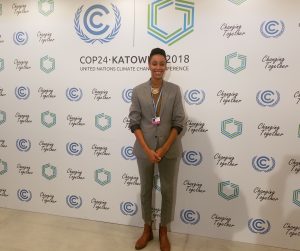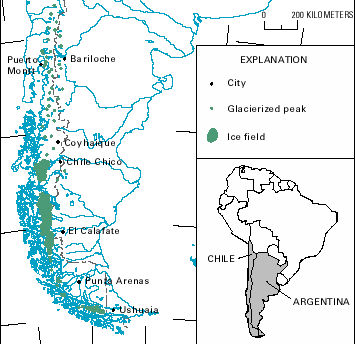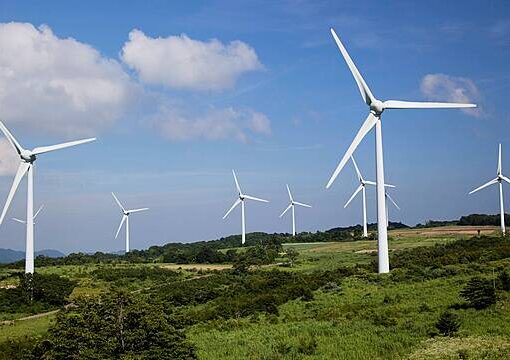By Ama Francis

After delays and closed-door dealings, this Saturday marked the conclusion of Conference of the Parties Twenty-Four (COP24), the annual meeting of the United Nations Framework Convention on Climate Change. COP24 set in motion the momentous Paris Agreement, wherein 196 countries agreed to keep global average temperature to 2°C above pre-industrial levels while striving to hold temperature increase below 1.5°C. At COP24, countries decided on rules for implementing the 2015 Paris Agreement (the Paris Rulebook), including guidelines for nationally-determined contributions (NDCs), transparency, and finance. Island states also pushed countries to act fast to limit global warming given the Intergovernmental Panel on Climate Change (IPCC) 1.5°C Special Report which cautions that global warming could reach 1.5°C, an existential threshold, as soon as 2030. With the release of the IPCC 1.5°C Report and a Global Carbon Project study that shows that carbon dioxide emissions will rise 2.7% by the end of this year, COP24 was the time to act.
“We need to move,” the Polish COP24 President announced days from closing, as major issues remained unresolved. “Climate change will not wait for us.”
The following are some of the key issues that brought the work of reaching a COP24 agreement down to the wire.
NDCs: The Paris Rulebook specifies the information Parties are to include in their NDCs, and sets guidelines for the accounting methodology for emissions and removals. Parties to date have included widely varying information in their NDCs making it hard to assess the progress towards the Paris Agreement’s goal of limiting global warming. (Recent data from Climate Action Tracker shows that current government pledges, including NDCs, only add up to limiting warming to 3.0°C above pre-industrial levels). COP24 sets out new NDC rules, requiring Parties to include information like a quantified reference point, time frame for implementation, scope and coverage of the NDC target, and how the NDC contributes towards achieving the Paris temperature goal. Parties also decided that the IPCC will set the accounting methodology for anthropogenic emissions and removals. All NDCs will be available in a public registry.
Transparency: The transparency rules are key to making sure Parties stick to their stated goals because of Paris’ bottom-up approach. Key issues for this section of the Paris Rulebook included the flexibility available for developing countries and the transparency rules’ start date:
- Flexibility: The transparency rules apply to all countries, replacing the approach of a bifurcated set of rules for developing and developed countries whereby only Annex I and Annex II countries submitted biennial reports. The U.S. has long been keen to have a common set of rules for all parties, an approach which won out at COP24. The new transparency rules, however, do allow for developing countries to self-determine whether they need flexibility in light of their capacities. Any developing country making use of the flexibility carve-out must specify to which provision it is applied, spell-out capacity constraints, and determine a time frame for improvement. Small Island Developing States (SIDS) and Least-Developed Countries (LDCs) can submit a national inventory of emissions, progress towards implementing their NDCs, and information on financial, technology transfer, and capacity-building support needed at their discretion.
- Transparency rules start-date: Countries facing the most severe impacts of climate change were eager to start the new transparency regime as soon as possible. Parties decided that the first biennial transparency and national inventory reports will be submitted by the end of 2024. This falls after the date of the first global stocktake, 2023, which will assess progress towards reaching the Paris temperature goal. The transparency and national inventory reports would have provided critical information on gaps for the global stocktake.
Finance: Finance remains one of the most contentious issues in the UN climate negotiations. At COP24, countries were to work out financial reporting under Article 9.5 of the Paris Agreement, whether the Adaptation Fund would be transferred from the Kyoto Protocol to the Paris Agreement, and the details of setting a new quantified finance goal after 2020.
- Information to be provided under Article 9.5: Developing country parties have long insisted that clear finance reporting is essential for planning and implementing their mitigation and adaptation actions. The final text provides that developed country Parties “shall biennially communicate indicative quantitative and qualitative information” regarding finance. However, the text includes the caveat that this information will be communicated “as available.” While the inclusion of both quantitative and qualitative information is important for setting clear expectations on the amount of finance developing countries can expect, the conditionality of the language means that this reporting may be less than useful. COP24 also supports a balance between mitigation and adaptation finance.
- The Adaptation Fund: The Adaptation Fund, which is primarily funded by the Clean Development Mechanism under the Kyoto Protocol, provides finance to developing countries for adaptation measures. Parties decided that the Adaptation Fund would serve the Paris Agreement. The Adaptation Fund will continue to be funded by the Clean Development Mechanism until the market mechanism set up by Article 6 of the Paris Agreement is operational (see Article 6 section below).
- New collective quantified finance goal: Conference of the Parties Twenty-One (COP21) urged developed countries to scale-up climate finance to reach the goal of mobilizing $100 billion annually by 2020. At COP24, Parties agreed to start the discussion on setting a new collective quantified goal in November 2020, using the $100 billion goal as a floor. The textual changes to paragraph 20 of the COP24 decision during the last week highlight the ongoing debate over developed countries’ commitment to climate finance. Instead of calling the $100 billion goal a commitment and highlighting gaps in current levels of finance as it did in earlier versions, the final text for paragraph 20 recycles Paris Agreement language—urging developed country Parties to scale up financial support. Germany and Norway doubled their contributions to the Green Climate Fund this COP24, and multilateral development banks announced a joint framework for aligning activities with Paris goals.
Article 6 Market Mechanisms: The Paris Agreement allows for countries to implement their NDCs through cooperative approaches “that involve the use of internationally transferred mitigation outcomes,” a new market mechanism, and non-market-based approaches under Article 6. However, Parties were unable to decide on the rules for Article 6 at COP24. Brazil played hardball, pushing against double counting rules that aimed to prevent both buyer and seller from counting a traded emissions reduction towards their NDCs. The final Article 6 rules have been deferred until next year.
Talanoa Dialogue, the IPCC 1.5°C Report & increasing ambition: The Talanoa Dialogue, set up at COP23 in Bonn, aimed to raise ambition in light of the Paris temperature goal. The Dialogue could have resulted in Parties renewing their NDCs to reflect the fact that they currently miss the Paris target. COP24 takes note of the Dialogue outcome, and asks Parties to raise ambition at the United Nations Secretary General’s 2019 Climate Summit. In a touch of irony, Parties could not agree to welcome the IPCC 1.5°C Report, although they commissioned the report in Paris. The U.S. joined Russia, Kuwait and Saudi Arabia in watering down the language; COP24 “welcomes the timely completion” of the report rather than the report itself.
The most up-to-date version of the COP24 agreement is a whopping 150-plus pages, signaling the amount of work Parties undertook to iron out the details of the Paris Agreement. The final text is balanced, showing concessions to get the world moving on climate action. Even amidst the climate-unfriendly federal position of both the U.S. and Brazil, COP24 showed that the Paris Agreement rolls on.




